Fruiting plants not only provide you with delicious, seasonal fruits, they also look stunning in a garden. There is no better talking point than a beautiful mini grove of fruiting trees. And for those living in apartments, there are plenty of dwarf ranges that can fit your limited space, while still offering fruit. Before planting remember that fruit trees require plenty of sun as well as good drainage, so planting needs to be strategic. Popular, deciduous fruit trees can be bought bare rooted and are perfect for planting in early Spring. Today we are going to discuss the best fruit trees to plant in Spring.
What Fruit Trees to Plant in Spring?
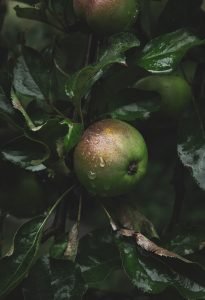
Apples
Apple trees are popular for gardens. They not only produce amazing fruit but also look beautiful as feature in your garden. Below are the guides for large apples, espaliered apples, dwarf apples, and cordon apples.
Apples – Large
When planting large apples you need to prepare a large hole by breaking up the soil and adding plenty of compost or other organic matter. Apple trees should be planted in sun or partial shade. Trees should be placed at least 5m apart. Plant apple trees in late Winter, early Spring and should be planted with at least one other apple tree. Both trees should flower at the same time to aid pollination.
Prune toward the end of the season to remove any dead or overcrowded branches. You can also use this as an opportunity to shape the tree. Harvest apples when they’re ripe.
Espaliered Apples
Espaliered apples are need a large hole made by breaking up soil and adding plenty of compost and/or other organic matter. Like large apples, plant trees in sun or partial shade. These trees need a little less space than large apples, with at least 3.5m between trees. Like large apples, espaliered apples need to be planted with at least one other apple tree that is flowering at the same time. This aides pollination. These trees also need pruning at the end of the season to shape the tree and remove dead and overcrowded branches. And, of course, harvest apples when they’re ripe.
Dwarf Apples
Like our espaliered apples, prepare a large hole by breaking up the soil and adding plenty of organic matter and/or compost. These apples also like sun or partial shade. Feeding isn’t required unless you have planted the trees close to each other or the tree is just planted. Each tree needs at least 1m of space around it. They also need to be planted with another flowering apple tree for the best pollination. Prune to shape and remove any dead branches or overcrowding. And harvest apples when ripe.
Cordon Apples
As with our apples above, prepare a large hole for cordon apples by breaking up the soil and adding plenty of compost or organic matter. Again, sun or partial shade are best. Feeding doesn’t need to be done unless, like dwarf apples, closely or freshly planted. Cordon apples need m of space all around. They also need to be planted with another apple tree for the best chance at pollination. Prune dead or overcrowded branches and shape at the end of the season. Harvest apples when ripe.
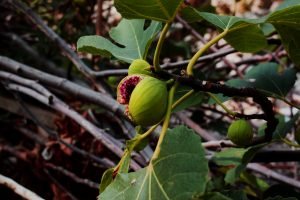
Figs
Figs are a great choice of fruit trees to plant in Spring. They are ideal for jam making and simply to enjoy the fruit. Figs like any reasonable, moisture-retentive soil that is also well-drained. They require a sheltered plating site that is in full sun. A north-facing wall with a frame in colder climates. When feeding, top-dress the root zone with a balanced organic fertiliser each Spring. Mulch with a well-rotted organic matter all year round. If you are growing in pot, apply a liquid tomato plant feed every 2-3 weeks once the plant starts fruiting. Plants need at least 3m space and bring container figs in cool place – like a garage – in Winter.
Figs are ripe when the skin feels soft and starts to split when gently squeezed. They can be dried or made into preserves. Fig plants will produce what we call fruitlets which flower and will produce fruit the following year.
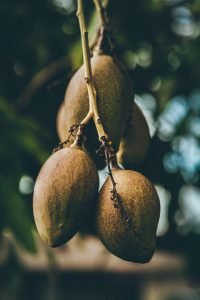
Kiwi
A perennial favourite in Australia, kiwi are easy to grow! They prefer a fertile, well-drained soil and to be trained to grow in sunny, sheltered areas. They are best grown on a sheltered north or west facing wall. In colder climates, grow under cover. Kiwi thrive in full sun as long as their roots are in midday shade. Kiwi need to be fed with well-rotted organic matter in late Winter. Apply a balanced organic fertiliser in early Spring as new growth emerges. Also add plenty of well-rotted, organic matter when planting. Kiwi need to be spaced 3m apart next to a strong trellis to ensure the plant is supported.
Many kiwi plants require both a make and female plant for successful pollination. One male plant can pollinate around 8 female kiwi. A hardier kiwi variety produces smaller fruits but are self-fertile and a healthy plant will bear fruit for 10 or more years.
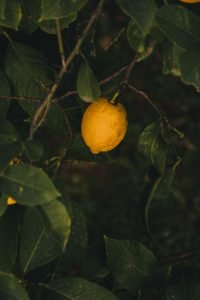
Lemons
Lemon trees are a garden staple and easy to grow and produce fruit. Below we will discuss both lemon trees and container grown lemons.
Lemon Trees
Lemon trees prefer warm, moist soil which is well-enriched with organic matter. They enjoy full sun and like a feed of high nitrogen organic fertiliser in Spring and Summer. Fertilise more if the leaves are yellowing. Plant 5m apart in Spring with good drainage. Prune in Spring or Summer to shape plants and watch out for thorns. Pick lemons when richly coloured and fully ripe. You can continue harvesting for several weeks as the lemons won’t ripen all at once.
Lemons – Container Grown
Container grown lemons also like warm, moist soil that is well-enriched with organic matter. Avoid potting soil that contains any wetting agents. Position in full sun and feed a high nitrogen organic fertiliser in Spring and Summer, and fertilise more if you see any yellowing leaves. Space trees 60cm apart. Plant in Spring with rich compost to keep the plants compact. This also makes it easy to move plants when needed.
Start small plants in containers that are at least 30cm wide and move them up a size each year until the tree matures. Al pots must provide good drainage. Prune in Spring or Summer and watch out for thorns. Pick when richly coloured and fully ripe. Picking can continue for weeks as fruits won’t ripen all at once.
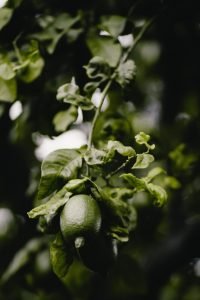
Limes
Like lemons, limes are an easy to grow, versatile fruit that are also highly decorative. Below we are going to discuss how to grow lime trees and lime trees in containers.
Lime Trees
Lime trees grow best in a warm, moist soil which is well-enriched with organic matter. They love full sun but, in Winter, plants need to be protected. Feed them a balanced organic fertiliser in Spring and Summer, and fertilise more if you see yellowing leaves. Trees should be grown 5m apart and should be planted in Spring. Prune in either Spring or Summer to shape the plants and to watch for thorns. Pick when limes are richly coloured and fully ripe. You can continue picking for several weeks as limes don’t ripen all at once.
Limes – Container Grown
Like lime trees, container grown limes should be placed in warm, moist soil that has bee well-enriched organic matter. In Winter, plants should be taken indoors in cold climates. Feed a balanced, organic fertilise in Spring and Summer, and if leaves begin to yellow. Place 60cm apart and plant in Spring. Container grown limes need a rich compost to keep plants compact, as well as make them easy to move when needed. Start plants in a 30cm pot and size up each year. Pot also must be well draining. Prune in Spring or Summer to shape plants, and watch for thorns. Pick when limes are richly coloured and fully ripe. They will ripen at different times over the following weeks, so you have fresh fruit for a few weeks.
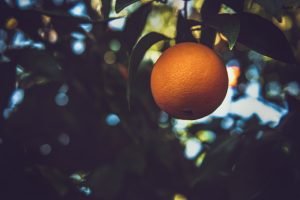
Oranges
While not the most common homegrown fruit, oranges are just as easy to grow as lemons and limes, and also make a great statement piece. We will discuss growing orange trees and growing oranges in containers, and why they are great fruit trees to plant in Spring.
Orange Trees
Orange trees prefer warm, moist soil which has been well-enriched with organic matter. Position in full sun and, in Spring and Summer, feed with a balanced organic fertiliser. If leaves are yellowing, you plant requires more nitrogen. Ensure there’s a 5m gap between each tree, each way. Plant out plants in Spring in an area with good drainage. Prune in Spring or Summer to shape plants and check for thorns. Sweet oranges need a long season of warm weather. Pick when richly coloured and fully ripe, fruits don’t ripen at the same time so you will have several weeks of harvesting.
Oranges – Container Grown
Plant oranges in warm, moist soil which is well-enriched with organic matter, in full sun. in Summer and Spring, feed with a balanced organic fertiliser. If leaves are yellowing, you may need to add more nitrogen. Space at least 60cm each way. Plant in Spring in pots with good drainage. Ensure you plant with rich compost to keep oranges compact. Start plants in a 30cm pot and size up yearly until plant matures. Prune in Spring or Summer, shape plants and watch for thorns. Like orange trees, oranges planted in containers need a long season of warm weather to be sweet. Pick when richly coloured and fully ripe.
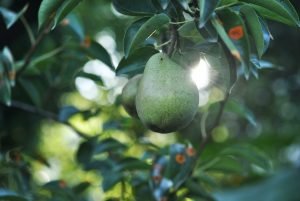
Pears
Not often seen in backyards and balconies, pears are still fantastic fruit trees to plant in Spring in order to grow and harvest. We will discuss cordon pears, espaliered pears, dwarf pears, and large pears as their care is very similar.
Pears prefer a moist, well-drained soil with a near-neutral pH. They also benefit from a mulch of well-rotted organic matter in Spring. Top this with a deep mulch of wood chips or sawdust all year round. Trees should have 1m space all round. Prepare to plant in Spring by breaking up soil to create a large hole. Add plenty of well-rotted organic material. A wider hole is better than a deeper one. Ensure you mulch after planting and circle the trunk with a wire cage or piping to protect the tree from animal pests like possums.
Prune pear trees in Winter to remove dead and overcrowded branches, and to shape the tree if necessary. Pruning also helps improve airflow. You should avoid feeding your trees too much nitrogen. Harvest your pears before the fully ripen and let them ripen under cool, indoor temperatures. You will need at least one other pear in the neighbourhood for pollination and a healthy pear tree will bear fruit for decades!
It is important to note that very hot or cold weather can affect the ripening of your pears. Leaving the fruit on the tree too long can cause pears to rot from the inside out.
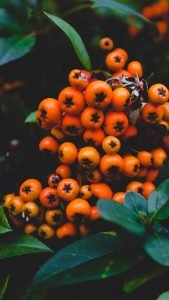
Persimmon
Persimmon plants are ideal fruit trees to plant in Spring. They look beautiful in gardens and provide lovely fruit. Persimmon are becoming more and more popular in small and large gardens. It loves deep fertile soil that is well-drained and positioned in full sun. Mulching with well-rotted organic matter in Spring is important to keep the tree healthy. Each tree should be spaced with 6m in each direction. When planting in Spring, prepare a large hole by breaking up the soil and adding plenty of well-rotted organic matter. You will also need to stake trees for the first 3-4 years.
Harvesting depends on variety. Non-astringent persimmons are perfect when still firm. Astringent varieties of persimmons need to be left until they are soft. It is also important to cover trees with netting to prevent birds and pests from destroying the fruit.
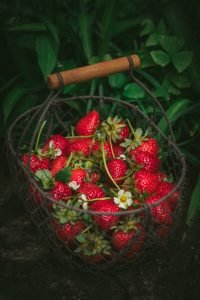
Strawberries
Strawberries are an incredibly popular plant to grow at home. Everyone loves fresh strawberries and they can be especially fun for children to grow! Strawberries love well-drained, rich soil with compost dug in. Slightly acidic soil is best. Position strawberries in a sunny area for best ripening, though they will also grow in partial shade. In Autumn and early Spring, top dress your established strawberry plants with a rich compost or organic fertiliser. Allow the plants to rest from midsummer on. Plants should be placed at least 60cm apart each way.
You can grow strawberries from seeds, which is best done in Spring or Autumn, or from purchased crowns. Planting in Autumn gives plants more time to establish their root system but it is fine to plant in Spring. Strawberries can be used as ground cover beneath grape vines or apple trees, or you can manage them as a perpetual patch. Remove weeds and withered leaves in late Summer and also remove thin runners to no more than 3 per plan. You can lift and transplant extra runners to grow further plants.
Pick strawberries early in the morning when they’re cool and put in the fridge immediately. Wash with cold water before eating. Spring and summer planting can be a lot of fun.
Excited to start growing your own fresh fruit at home? Aumann’s Garden Supplies has everything you need to start growing your own fruit! Explore our range today!

